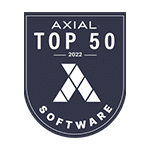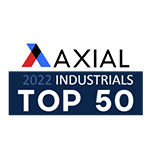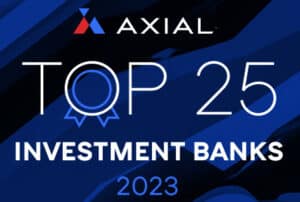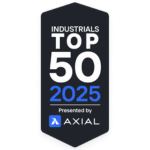
FOREWORD: At Focus Enterprises, we believe excellent opportunities exist for buyers and sellers alike who apply certain disciplines in today’s depressed merger and acquisition climate.
Marshall Graham, founder and Chairman of Focus Enterprises, Inc. has written a comprehensive definition of twelve proven value components or “Value Drivers” that, when applied rigorously, can mean the difference between success and failure in the current economic environment.
In April, Part 1 of the article entitled, “Twelve Value Drivers Help Ensure Success in Today’s Tough M&A Environment,” defined the first six of twelve Value Drivers. Part 2, published here, describes Value Drivers seven through twelve. We’re repeating the introduction for readers viewing the article for the first time.
Successful participation in the current M&A climate is achieved by finding value and then integrating it into current company platforms or existing corporate portfolios.
It is a great time to buy, especially for buyers who can close for all or almost all cash. Although M&A transactions are substantially off in the large company segment, excellent opportunities exist both to buy and to sell in mid-market and smaller company segments. There also are outstanding opportunities for acquiring selected assets, intellectual property and average and/or under-performing companies.
THE M&A PROCESS HAS CHANGED
Today, buyers and sellers are more cautious than ever before. Pre-LOI due diligence is lasting much longer prior to firm deal terms being agreed upon. There is much more focus on forecasted revenues and stable and growing customer bases. Integration planning on paper is taking longer prior to the execution of a Letter of Intent. Finally, management teams, while extremely important in all M&A activity, are becoming much more central to success in today’s M&A transactions.
For buyers and sellers alike, the key to achieving successful M&A transactions, with the assistance of intermediaries, is to identify the value components or “Value Drivers” of the transaction and then to make certain a plan is in place to integrate these components at the least cost.
TWELVE VALUE DRIVERS SUPPORT SUCCESS
At Focus Enterprises, we assist our clients in carefully evaluating twelve specific Value Drivers when considering a buy-side transaction. The first six were described in the April issue of this newsletter (download a copy here). Here are Value Drivers seven through twelve:
Value Driver #7: Management Experience and Expertise
This Value Driver is closely aligned with Value Driver #6: Human Capital, with the following differences: Does the management team of a company being acquired have substantial knowledge of a specific product, process or market segment that is a necessary requirement of the acquiring company? Can the managers of the company to be acquired add value to the current management team? Will this new management team give the organization the capacity to grow to the next level?
Value Driver #8: General and Administrative Leverage
Almost as important as the Gross Margin Value Driver is the general and administrative leverage when combining the acquiring company and the company to be acquired. Once again, careful planning is necessary in this area prior to the LOI stage. Buyers tend to overestimate the cost savings of combining companies at the G&A line. Also, transition costs are often underestimated, if not overlooked altogether.
Value Driver #9: Distribution Leverage
Potential buyers frequently say, “I want to buy a company where I can drive the products from the acquired company through my existing distribution system.” While this concept is sound, there are pitfalls. Buyers need to be sure that end user customer requirements are complementary to this strategic approach.
Demand should be measured through effective market research. Sales and dealer training costs need to be taken into account, and customer service expense of the new products needs to be analyzed. These are just a few of the items about this Value Driver that need to be studied. Distribution leverage is an exciting concept and a top Value Driver, but a hard look at implementation details is critical.
Value Driver #10: History/Reputation and Operating Tenure
In the heat of an M&A transaction, this Value Driver is often overlooked. It has to do with the stability and constancy of the business being acquired. The fact that the company to be acquired has been in business for some time does matter and does have value.
The fact that customers have been with this company for some period of time does matter and the fact that the company is operating with the same management team in place is a positive factor. While there are other factors with this Value Driver, company history, reputation and continuing operations are very important to the contemplated transaction.
Value Driver #11: Sales and Marketing Effectiveness
This Value Driver is right at the top of our list when we are advising clients. All too often buyers concentrate on exotic product sets, exciting technology (that someday could be turned into a product) or new markets and customer sets. One key and very important element of a successful buy-side transaction is to determine whether the company to be acquired has developed an effective and “least cost” sales and marketing model.
When was the model developed? How long has the model been in place? What are the statistical results of the sales and marketing model over time? Is the model scaleable through the forecasted period? If the answers to these and additional questions are positive, chances are you are on the right acquisition path.
Value Driver #12: Barriers to Competitive Entry/Competitive Differentiation
Barriers to competition are becoming more difficult to identify as time goes on, as many companies are reluctant to file for patents even if a technology or a process is evaluated to be “protectable.” Buyers must look for effective barriers to competition when evaluating a potential acquisition through competitive differentiation.
Examples are: Does the company have a “first mover” advantage in a particular market or market segment? Does the company to be acquired have significant product features that would provide a real product advantage when compared to competition? Does the company to be acquired have a significant technological edge that affords a 12 to 18 month product roadmap advantage? These are but a few of the questions that should be asked and then thoroughly and objectively answered when looking for a competitive advantage Value Driver.
Conclusion
In today’s tough merger and acquisition environment, it is more important than ever to concentrate on these twelve solid Value Drivers when advising clients on the transaction process. The late 1990s called for buying a company and then making it work. Today’s environment dictates careful study and analysis of all of the potential Value Drivers prior to establishing value, setting a purchase price and executing a Letter of Intent to acquire.
The complete article, Twelve Value Drivers Help Ensure Success in Today’s Tough M&A Environment by Marshall Graham, will appear in the 2003 Venture Guide & Directory: The Entrepreneur’s Source for Business Management & Venture Investment Success, published by Capital Growth Interactive, Baltimore. The Directory will be available in June 2003. Address your inquiries to Focus by telephone to 202-785-9404 x341, by fax to 202-785-9413, or via e-mail to [email protected].












